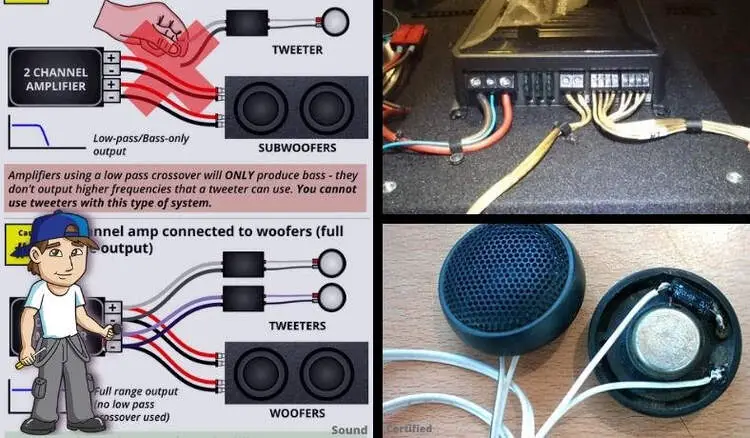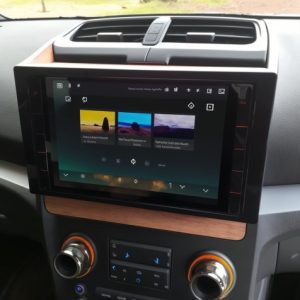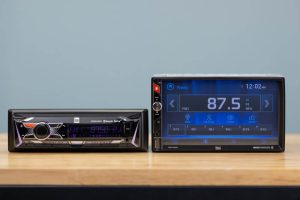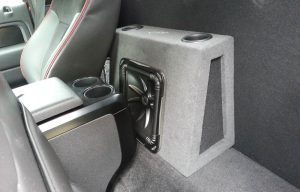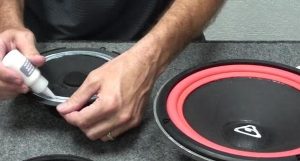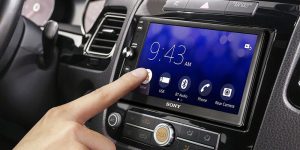Tweeters play a vital role in delivering crisp, high-frequency sounds in your car audio system. These small speakers handle the treble, ensuring vocals and instruments shine with clarity. But a common question arises: Do tweeters need an amplifier to perform at their best? This guide dives deep into the topic, exploring how amplifiers impact tweeter performance, when you need one, and how to optimize your car audio setup for crystal-clear sound. By the end, you’ll have a clear understanding of whether an amp is necessary for your tweeters and how to elevate your listening experience.
Contents
- What Are Tweeters and Why Are They Important?
- Understanding Amplifiers and Their Role in Car Audio
- Do Tweeters Need an Amplifier?
- Benefits of Using an Amplifier with Tweeters
- When You Might Not Need an Amplifier
- How to Choose the Right Amplifier for Your Tweeters
- Installation Tips for Tweeters and Amplifiers
- Common Myths About Tweeters and Amplifiers
- FAQs About Tweeters and Amplifiers
- Conclusion: Should You Get an Amplifier for Your Tweeters?
What Are Tweeters and Why Are They Important?
Tweeters are specialized speakers designed to reproduce high-frequency sounds, typically ranging from 2,000 Hz to 20,000 Hz. They bring out the finer details in music, such as cymbals, vocals, and string instruments. Without tweeters, your car audio system would lack the sparkle and clarity that make songs come alive.
In a car audio setup, tweeters work alongside woofers (for low frequencies) and midrange speakers (for mid-frequencies) to create a balanced soundstage. Their small size allows them to be mounted in various locations, like dashboards, door panels, or A-pillars, ensuring sound reaches your ears directly. However, their performance depends heavily on how they’re powered, which brings us to the core question: Do tweeters need an amplifier?
Understanding Amplifiers and Their Role in Car Audio
An amplifier boosts the electrical signal sent to your speakers, providing the power needed to produce sound. In car audio, amplifiers enhance volume, clarity, and dynamic range, allowing your speakers to perform at their peak. Most factory car stereos come with built-in amplifiers, but these are often underpowered, leading to distorted or weak sound, especially at higher volumes.
Tweeters, like other speakers, require power to function. The real question is whether the power from your head unit (car stereo) is sufficient or if an external amplifier is necessary to unlock their full potential. Let’s break this down step by step.
Do Tweeters Need an Amplifier?
The short answer is: It depends. Tweeters don’t always require a separate amplifier, but adding one can significantly improve their performance. To decide whether you need an amp, consider the following factors:
1. Power Output of Your Head Unit
Factory-installed car stereos typically deliver 10-20 watts RMS (Root Mean Square) per channel. This power is often enough to drive basic tweeters, especially if they’re part of a component speaker system with a passive crossover. Passive crossovers direct high-frequency signals to the tweeters, ensuring they receive the appropriate power.
However, if your tweeters are power-hungry or you’re aiming for louder, cleaner sound, the head unit’s built-in amp may fall short. Underpowered tweeters can produce distorted or muffled treble, diminishing the quality of your audio. An external amplifier provides more consistent power, allowing tweeters to handle high frequencies with precision.
2. Type of Tweeters
Tweeters come in various types, including dome, cone, and ribbon designs, each with different power requirements. For example:
- Soft dome tweeters (made of silk or fabric) are efficient and work well with lower power, making them suitable for head unit power.
- Metal dome tweeters (like aluminum or titanium) often require more power to achieve their full dynamic range.
- High-end tweeters, such as those in premium component systems, are designed to handle higher wattage and benefit from an external amp.
Check your tweeter’s specifications, particularly the RMS power rating and impedance (usually 4 ohms). If the tweeter’s power needs exceed what your head unit can deliver, an amplifier becomes essential.
3. Audio Goals and Listening Habits
Your audio preferences play a big role in determining whether an amp is necessary. If you listen to music at moderate volumes and are satisfied with your current setup, your head unit might suffice. But if you crank up the volume or demand audiophile-grade sound, an amplifier makes a noticeable difference.
Amplified tweeters produce sharper, more detailed highs, even at high volumes. They also handle dynamic music genres—like rock, EDM, or classical—better, ensuring every note is crisp and distortion-free. For car audio enthusiasts chasing a premium soundstage, an amp is a must-have.
4. Active vs. Passive Crossovers
Tweeters in component speaker systems often rely on crossovers to filter out unwanted frequencies. There are two types of crossovers:
- Passive crossovers: These are wired between the amplifier and speakers, requiring no additional power. Most tweeters in passive systems work fine with a head unit’s power, though an external amp can still enhance performance.
- Active crossovers: These require a dedicated amplifier and allow for precise control over frequency distribution. Active setups demand an external amp, as the head unit alone can’t provide the necessary power or control.
If you’re running an active crossover system, an amplifier isn’t optional—it’s a requirement.
Benefits of Using an Amplifier with Tweeters
Adding an amplifier to your tweeter setup offers several advantages that elevate your car audio experience. Here’s why an amp is worth considering:
Enhanced Sound Quality
An amplifier delivers clean, consistent power, allowing tweeters to reproduce high frequencies with greater accuracy. You’ll notice improved clarity in vocals, sharper instrument separation, and a more immersive soundstage. This is especially true for complex tracks with layered highs.
Increased Volume Without Distortion
Head units often struggle to maintain sound quality at high volumes, leading to clipping or distortion. An external amp provides ample power, ensuring tweeters perform flawlessly even when you push the volume. This is crucial for genres with prominent treble, like jazz or pop.
Better Dynamic Range
Dynamic range refers to the difference between the softest and loudest sounds a speaker can produce. Amplifiers improve tweeter dynamics, allowing them to handle sudden shifts in music—like a soaring vocal or a sharp cymbal crash—without losing detail.
Flexibility for Future Upgrades
Installing an amplifier gives you room to expand your audio system. Whether you add a subwoofer, upgrade to high-end tweeters, or switch to an active crossover setup, an amp provides the power and versatility to support your upgrades.
When You Might Not Need an Amplifier
While amplifiers offer clear benefits, they’re not always necessary. Here are scenarios where you can skip the amp:
- Low to Moderate Volume Listening: If you keep the volume low and your tweeters sound clear, your head unit’s power is likely sufficient.
- Efficient Tweeters: Some tweeters, especially soft dome models, are designed to work well with minimal power.
- Budget Constraints: Amplifiers add to the cost of your setup. If you’re happy with your current sound and don’t plan to upgrade, you can stick with your head unit.
- Simple Audio Setup: If your car audio system is basic (e.g., factory speakers with no component system), an amp might be overkill.
How to Choose the Right Amplifier for Your Tweeters
If you decide to add an amplifier, selecting the right one is critical. Here’s a quick guide to ensure compatibility and performance:
Match Power Ratings
Check your tweeter’s RMS power rating and choose an amplifier that delivers power within that range. For example, if your tweeters are rated at 50 watts RMS, an amp providing 40-60 watts RMS per channel is ideal. Avoid overpowering your tweeters, as this can cause damage.
Consider Impedance
Most tweeters have a 4-ohm impedance, so ensure your amplifier is compatible. Mismatched impedance can lead to inefficient power delivery or overheating.
Look for Clean Power
Choose an amplifier with low total harmonic distortion (THD) and a high signal-to-noise ratio (SNR). These specs ensure the amp delivers clean, undistorted power to your tweeters.
Size and Installation
Amplifiers come in various sizes, from compact models to multi-channel beasts. Consider your car’s available space and whether you need a mono amp (for subwoofers) or a multi-channel amp (for tweeters and other speakers).
Popular Amplifier Brands
Trusted brands like Alpine, Pioneer, Kenwood, and Rockford Fosgate offer reliable amplifiers for car audio. Look for models with built-in crossovers or adjustable gain controls for added flexibility.
Installation Tips for Tweeters and Amplifiers
Proper installation is key to getting the most out of your tweeters and amplifier. Follow these tips for a seamless setup:
- Secure Wiring: Use high-quality speaker wires and ensure all connections are tight to prevent signal loss or interference.
- Tune the Amplifier: Adjust the gain, crossover frequency, and other settings to match your tweeters’ specifications. This prevents overpowering or underpowering the speakers.
- Position Tweeters Strategically: Mount tweeters at ear level, angled toward the listener, for optimal sound dispersion.
- Test the System: Play a variety of music genres to fine-tune the equalizer and ensure the tweeters blend seamlessly with other speakers.
- Consult a Professional: If you’re new to car audio, a professional installer can ensure your amplifier and tweeters are set up correctly.
Common Myths About Tweeters and Amplifiers
Let’s debunk a few misconceptions that might cloud your decision:
- Myth 1: Tweeters Don’t Need Much Power
While tweeters require less power than woofers, they still need sufficient wattage to produce clear, dynamic highs. Underpowered tweeters sound flat or distorted. - Myth 2: Any Amplifier Will Work
Not all amps are created equal. A mismatched or low-quality amplifier can harm your tweeters or deliver subpar sound. - Myth 3: Amplifiers Are Only for Bass
Amplifiers benefit all speakers, including tweeters, by providing clean power and improving overall audio quality.
FAQs About Tweeters and Amplifiers
Can I damage my tweeters by not using an amplifier?
Underpowered tweeters may distort at high volumes, but they’re unlikely to be damaged if driven by a head unit within their power range. However, an amp reduces distortion and prolongs tweeter lifespan.
Do component tweeters need an amp?
Component tweeters often work with passive crossovers and can function without an amp. But for optimal performance, especially in active setups, an amplifier is recommended.
How much power do tweeters typically need?
Most tweeters require 20-100 watts RMS, depending on their design and efficiency. Check the manufacturer’s specs for exact requirements.
Can I use a single amp for tweeters and other speakers?
Yes, a multi-channel amplifier can power tweeters, midrange speakers, and woofers. Ensure each channel’s power output matches the speakers’ requirements.
Conclusion: Should You Get an Amplifier for Your Tweeters?
Tweeters don’t always need an amplifier, but adding one can transform your car audio experience. If you crave louder, clearer, and more dynamic sound, an external amp is a game-changer. It ensures your tweeters perform at their best, delivering sparkling highs that elevate every song. On the other hand, if you’re satisfied with moderate volume levels and your head unit powers your tweeters adequately, you can skip the amp for now.
Before deciding, assess your tweeters’ power needs, your audio goals, and your budget. If you choose to add an amplifier, select one that matches your tweeters’ specifications and install it properly for optimal results. With the right setup, your car audio system will deliver a concert-like experience every time you hit the road.
Ready to upgrade your car audio? Explore amplifier options, check your tweeter specs, and take your sound to the next level!
